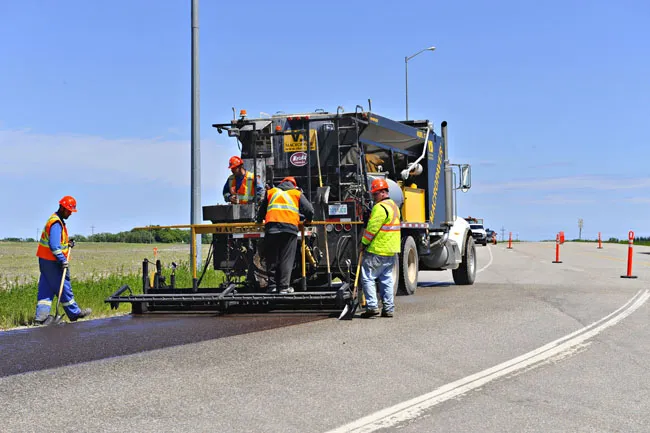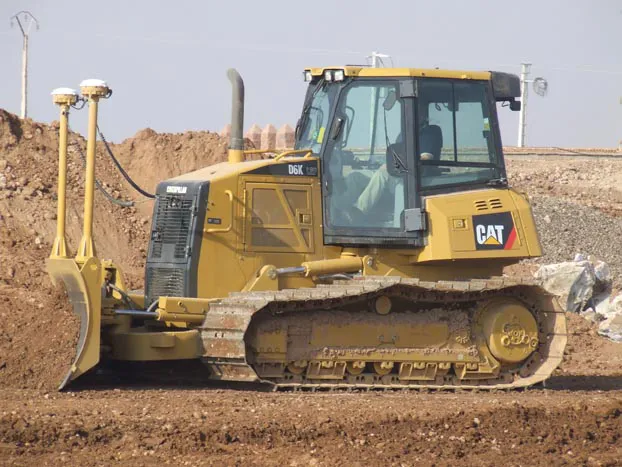Everyone in the construction and infrastructure maintenance sector faces the same great challenge - create reality with design through efficiency. But, as designs become more complex, how to gain efficiency is the real trick.
These challenges are overcome only by people dedicated to solving problems. That puts them among the world’s innovators, said Ola Rollen, chief executive of technology information company
It remains true, also, that necessity is the mother of invention. People will find a way of achieving a goal that at first appears unachievable. Having a great deal of knowledge about a subject is not enough to innovate. An equally essential ingredient is having an imagination to see further, to see the big picture, he said.
The first day of the event, held again at the MGM Grand Hotel and Casino, was attended by around 3,500 delegate from around the world, intent on hearing how innovation, such as 3D machine control, can improve their businesses.
Innovation does not sit alone, but comes from a long history of thought and experience, as well as dreamers. Rollen held up the struggle by the two American Wright brothers who developed the first practical heavier than air aeroplane in 1903.
Their knowledge was based on the sketches of proposed flying machines by the 15th century Italian polymath Leonardo da Vinci. It also borrowed heavily on the findings of the German glider pioneer, Otto Lillienthal.
It is this combination of imagination and knowledge that leads to innovation. A big boost to innovation has been the move towards collaborative workplace processes where people with seemingly very different expertise work with people in other areas to come up with solutions. Innovation is born of this, he said.
That has led to trends such as the smart connected factory shopfloor where information is shared and not kept in silos. From this the ‘shopfloor’ has become the construction site where knowledge is shared on increasingly complex projects.
An increasingly important trend is crowdsource mapping and also the move toward things being autonomous, for example removing the driver from a vehicle. Innovation will be the key to this, he said.
The Hexagon Geospatial track of the conference gave delegates an insight into just how efficient machine control can be. Long gone are the days of surveyors putting out wooden stakes around the construction site to guide machine drivers, said Edvin Dale, director of geomatics at the Norwegian company K.A. Aurstad, in his presentation. Since adopting machine control, there has been a direct correlation between the number of machine controlled excavators – the company has 45 - and company profits. Both have risen in tandem, said Dale, who is also in Leica Geosystems users’ group.
Dale calculated that graders using 3D for prework on a road paving job were around 85% efficient versus 60% for 2D, where efficiency levels were calculated on the basis of human intervention in the graders. There were fewer human interventions for 3D, he said.
Accuracy and quality are essential for contractor and client alike, and 3D meant the grader had to rework fewer parts of a surface than a grader using 2D. Dale said there was a second grader pass on a surface only 15% or the time versus 50% of the time using 2D. A third pass was needed only 1% of the time for 3D versus 25% for 2D.
But innovation is not always accepted easily. As Rollen commented during his keynote presentation, the Wright brothers had to take their flying machine and ideas to France where investors were more prepared to take a chance. A key innovation was that the Wright brothers developed a three axis control system that made fixed-wing powered flight possible.
Similarly, an innovation for excavator buckets is spreading more slowly than perhaps expected. Delegates heard how tilting buckets for excavators are now widely used in Scandinavia – market penetration of 95% - but are still a novelty outside the region.
Per Vappling, vice president of marketing for Rototilt, said the company, which has been making rotating buckets since 1989, teamed up with Hexagon last year to experiment with 3D machine control on the tilting units attached to 60 excavators.
Improvements in accuracy have meant time savings of between 20-40%, he said.
HEXAGON LIVE - making the digital world become a reality
HEXAGON LIVE - the digital world becomes reality. Everyone in the construction and infrastructure maintenance sector faces the same great challenge - create reality with design through efficiency. But, as designs become more complex, how to gain efficiency is the real trick. These challenges are overcome only by people dedicated to solving problems. That puts them among the world’s innovators, said Ola Rollen, chief executive of technology information company Hexagon, during his welcoming keynote address to
June 3, 2015
Read time: 4 mins








